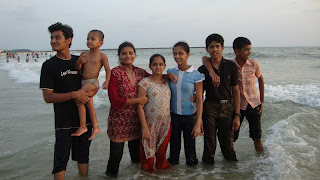'ಕುಕ್ಕೆ' ಮತ್ತು 'ಮಂಜ'
ತುಳು ಭಾಷೆಯಲ್ಲಿ 'ಕುಕ್ಕೆ' ಎಂದರೆ ಕರಿನಾಗರ ಅಥವಾ ಕಾಳಿಂಗ ಸರ್ಪ ಎಂದು ಅರ್ಥ. ನಾಗಾರಾಧನೆಗೆ ಪ್ರಸಿದ್ದವಾಗಿರುವ ತುಳುನಾಡಿನಲ್ಲಿ ಸುಬ್ರಹ್ಮಣ್ಯನ ಮೂಲಕ (ಹಾವನ್ನು ನಿಯಂತ್ರಣದಲ್ಲಿ ಇಟ್ಟುಕೊಳ್ಳುವ ಮತ್ತು ಹಾವನ್ನು ವಾಹನವಾಗಿ ಉಳ್ಳ ಸುಬ್ರಹ್ಮಣ್ಯ ) ಸರ್ಪವನ್ನು ಆರಾಧಿಸುವ ಕ್ರಮ ಇದೆ. ನಿಯಂತ್ರಣಕ್ಕೆ ಒಳಪಡದ ಕ್ರೂರ ಮೃಗಗಳನ್ನು ಮತ್ತು ಉರಗಗಳನ್ನು ಆರಾಧನೆಯ ಮೂಲಕ ಒಲಿಸಿಕೊಳ್ಳುವ ಈ ಪರಂಪರೆ ವಿಶಿಷ್ಟವಾದದ್ದು. ಹಂದಿಯನ್ನು 'ಪಂಜುರ್ಲಿ' ದೈವದ ಮೂಲಕವೂ ಹುಲಿಯನ್ನು 'ಪಿಲಿಚಾಮುಂಡಿ' ಭೂತದ ಮೂಲಕವೂ ಆರಾಧಿಸುವ ಕ್ರಮ ತುಳುನಾಡಿನಲ್ಲಿದೆ.
ಹಿಂದಿನ ಜನರು ಭಯ ಮತ್ತು ಗೌರವಭಾವದಿಂದ ಕ್ರೂರ ಮೃಗಗಳ ಹೆಸರೆತ್ತಿ ಕರೆಯಲಿಲ್ಲ. ಹುಲಿಯನ್ನು 'ನರಿ' ಎಂದೂ ಹಾವನ್ನು 'ಒಳ್ಳೆಯವನು' (ಎಡ್ಡೆಂತಿನಾಯೆ) ಎಂದೂ ತುಳುನಾಡಿನಲ್ಲಿ ಕರೆದರು. ದಕ್ಷಿಣ ಕನ್ನಡ ಜಿಲ್ಲೆಯಲ್ಲಿ ನರಿಕೊಂಬು, ನರಿಮೊಗರು, ನರಿಂಗಾನ ಮೊದಲಾದ ಊರುಗಳಿವೆ. ಹುಲಿ ಹೆಚ್ಚಾಗಿರುವ ಪ್ರದೇಶ ಎಂದು ಅದರರ್ಥ. ಹಾಗೆಯೇ, ಚಿರತೆಯನ್ನು ಜನಪದರು 'ಪುಚ್ಚೆ' ಎಂದು ಕರೆದರು. ಪುಚ್ಚಮೊಗರು, ಪುಚ್ಚಪ್ಪಾಡಿ ಎಂದರೆ ಚಿರತೆಗಳು ಹೆಚ್ಚಾಗಿದ್ದ ಪ್ರದೇಶವಾಗಿತ್ತು.
ಕುಕ್ಕೆಸುಬ್ರಹ್ಮಣ್ಯ ಮತ್ತು ಪೆರ್ಲದ ಬಳಿ ಕಾಟುಕುಕ್ಕೆ ಎಂಬಲ್ಲಿ ಎರಡು ಪ್ರಸಿದ್ದ ಸುಬ್ರಹ್ಮಣ್ಯ ದೇವಸ್ಥಾನಗಳಿವೆ. ಸುಬ್ರಹ್ಮಣ್ಯನ ಮೂಲಕ ಕರಿನಾಗರಕ್ಕೆ ಪೂಜೆ ಸಲ್ಲುವದು ಈ ದೇವಾಲಯಗಳ ವಿಶೇಷತೆ. ಈ ಪ್ರದೇಶದಲ್ಲಿ ಹಿಂದೆ ಕಾಳಿಂಗ ಸರ್ಪಗಳು ತುಂಬಾ ಇದ್ದಿರಬೇಕು.
ಕರಿನಾಗರದಂತೆ ಸರ್ಪಗಳಲ್ಲಿರುವ ಇನ್ನೊಂದು ಮುಖ್ಯ ಪ್ರಭೇದ ಹಳದಿನಾಗರ ಅಥವಾ ಗೋಧಿನಾಗರ. ತುಳುವಿನಲ್ಲಿ ಇದಕ್ಕೆ ಮಂಜ ಎನ್ನುತ್ತಾರೆ. ಹಳದಿ ಬಣ್ಣ ಎಂಬ ಅರ್ಥ ಕೊಡುವ ಮಂಜಲ್ ಶಬ್ದ ಹ್ರಸ್ವವಾಗಿ ಮಂಜ ಆಗಿರಬೇಕು. ತುಳುವಿನಲ್ಲಿ ಗೋಧಿನಾಗರಕ್ಕೆ ಮಂಜೆ ಎಂದೂ ಹೇಳುತ್ತಾರೆ. ಮಂಗಳೂರು ಬಳಿ ಮಂಜನಾಡಿ ಎಂಬ ಊರು ಇದೆ. (ಮಂಜನ + ಹಾಡಿ = ಮಂಜನಾಡಿ ಆಗಿದೆ. ) ಹಳದಿಸರ್ಪಗಳು ಹೆಚ್ಚಾಗಿರುವ ಕಾಡು ಎಂದರ್ಥ. ಕಾರ್ಕಳದ ಬಳಿ ಮಂಜರಪಲ್ಕೆ ಎಂಬ ಊರು ಇದೆ. ತುಂಬ ಹಳದಿನಾಗರ ಇರುವ ಜಾಗ ಎಂದು ಇದರ ಅರ್ಥ. ಅದೇ ರೀತಿ ಕುಡುಪು ಎಂಬಲ್ಲಿ ಇನ್ನೊಂದು ಪ್ರಸಿದ್ದ ಸುಬ್ರಹ್ಮಣ್ಯ (ನಾಗ) ದೇವಸ್ಥಾನ ಇದೆ. ಕುಡುಪು ಎಂದರೆ ಸರ್ಪಗಳು ವಾಸವಾಗಿರುವ ಹುತ್ತ ಎಂದು ಅರ್ಥ.
ಬೆಳ್ತಂಗಡಿ ಸಮೀಪ ಬಳ್ಳಮಂಜ ಎಂಬ ಊರು ಇದೆ. ಹಿಂದಿನ ಕಾಲದಲ್ಲಿ ಆ ಊರಿನ ಯಾವದೋ ಒಂದು ಮನೆಯಲ್ಲಿ ಬಳ್ಳದಲ್ಲಿ (ಸೇರಿಗೆ ಸಮಾನವಾದ ಒಂದು ಅಳತೆಯ ಸಾಧನ . ಅಗಲವಾದ ಬಾಯಿ ಇದ್ದು ಮರದಿಂದ ತಯಾರಿಸಿರುತ್ತಾರೆ). ಮಂಜ (ಗೋಧಿನಾಗರ) ಸೇರಿಕೊಂಡು ಬಹಳ ದಿನ ಹೊರ ಹೋಗದೆ ಮನೆಯವರಿಗೆ ಹೆದರಿಕೆ ಹುಟ್ಟಿಸಿರಬೇಕು. ಮುಂದೆ ಆ ಊರಿಗೆ ಬಳ್ಳಮಂಜ ಎಂದೇ ಹೆಸರಾಯಿತು. ತುಳುಬ್ರಾಹ್ಮಣರಲ್ಲಿ 'ಮಂಜತ್ತಾಯೆ' ಎಂಬ ಉಪನಾಮ ಇರುವ ಕುಲದವರಿದ್ದಾರೆ. ಬಹುಶ: ಇವರು ಸುಬ್ರಹ್ಮಣ್ಯ ದೇವಸ್ಥಾನದಲ್ಲಿ ಪೂಜೆ ಮಾಡುತ್ತಿದ್ದವರಾಗಿರಬೇಕು.












